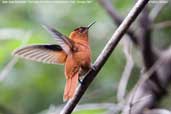
January 2007
The Juan Fernandez Firecrown is endemic to Robinson Crusoe Island situated about 700 kilometres off the coast of Chile. It is found in forest, woodland and gardens which are situated mainly on the western side of the island.
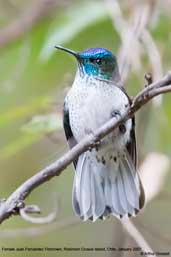
The male is a deep chestnut with black wings and a reddish-yellow crown patch which is only visible from certain angles. The female has greeny-blue upperparts, a blue crown patch and white underparts with greeny-blue spots on the throat and flanks.
It is a relatively large hummingbird and tends to perch rather than hover when feeding. Presumably, its isolation and the absence of too many predators allowed it to develop in this way.
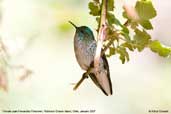
It feeds mainly on nectar and, while it does feed from some introduced plants such as eucalyptus, it depends mainly on the endemic plants of the island such as the Juan Bueno tree Raphithamnus venustus with its purple trumpet-like flowers and the famous Col de Juan Fernadez bush Dendroseris litoralis.
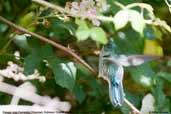
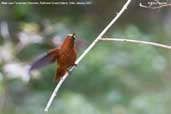
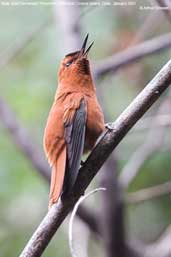
| Previous Page | Back to Index | Next Page |